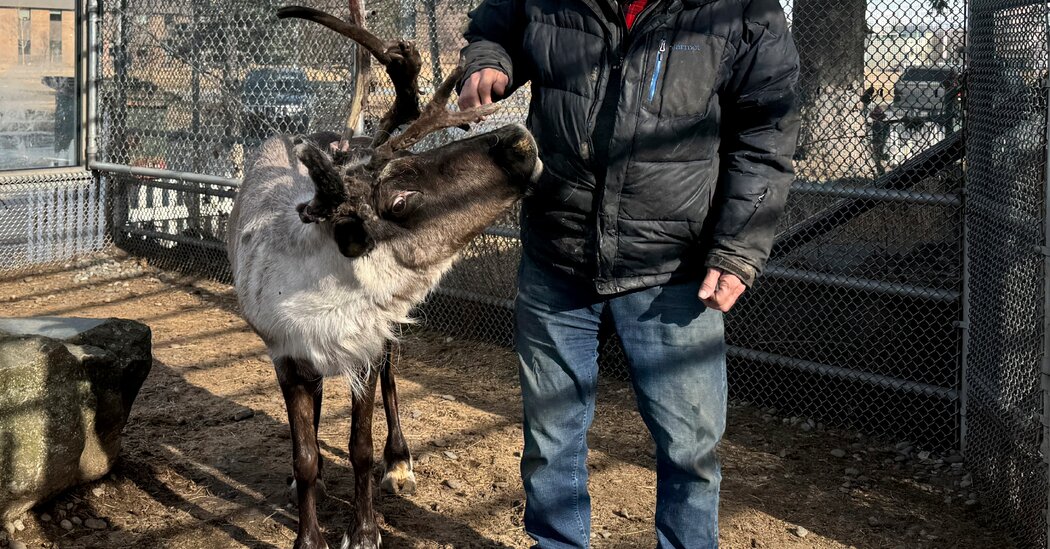
Thomas Vilgis, a food physicist at the Max Planck Institute for Polymer Research in Germany, has been in love with foie gras for a quarter century. The luxurious delicacy is a pâté or mousse made from the rich, fattened livers of ducks or geese.
“It’s something really extraordinary,” Dr. Vilgis said, recalling his early encounters with high-quality foie gras when he lived and worked in Strasbourg, France. It was soft and buttery and, once the fats began to melt in his mouth, the flavors evolved and exploded. “It is like fireworks. You have suddenly a sensation of the whole liver,” he said.
But such transcendence comes at a price.
To fatten up the liver that’s used to create foie gras, farmers force-feed the fowl more grain than their bodies need. The excess food is stored as fat in the animal’s liver, which balloons in size.
While he’ll eat foie gras produced by local farmers on occasion, Dr. Vilgis finds the force feeding intolerable at an industrial scale. “It’s terrible to see,” he says.
Dr. Vilgis wondered whether he could somehow “make a similar product but without this torture.”
In a paper published Tuesday in the journal Physics of Fluids, he and his colleagues say they believe they have devised a technique that allows ducks and geese to eat and grow normally. To be clear, though, this is not a foie gras substitute that spares the lives of the birds.
The approach from his lab uses enzymes to break down duck fat. Then the mixture of normal duck liver and treated fat is finished the same way as traditional foie gras — puréed in a blender and heated slightly. “Of course, it’s not a 100 percent agreement, but we are very close,” Dr. Vilgis said — so close that he says he can’t even taste the difference.
“It’s much better than many other products which try to simulate foie gras,” he said. That includes processes that use plant fats (“It has not the same flavor, it has not the same melting, nothing,” he said) or collagen (“This makes it like a rubber,” he observed).
Devising this approach was riddled with failure. When the team tried simply combining regular duck liver and untreated fat, no matter the proportions, the result was not foie gras.
“The mechanical properties are different,” he said. “The fat distribution is different. Everything was not working.”
The researchers tried adding emulsifiers and later gelatin from the skin and bones of the birds, but the consistency was off.
Then Dr. Vilgis thought about what occurs inside the bird’s body when it’s force-fed. The duck or goose digests all that extra food using, among other things, enzymes called lipases that act like pairs of molecular scissors. They snip the fat molecules into smaller pieces, allowing them to “rearrange and crystallize in different forms,” he said. The crystallized fat forms irregular clusters that are surrounded by a matrix of liver proteins, which imparts the indulgent flavor and texture.
That was the key insight. “We just did what happens in the small intestine in the laboratory,” Dr. Vilgis said. When the team treated the duck fat with lipases, mixed it with normal liver, and then studied it with X-ray scattering and other techniques, the result was remarkably similar to foie gras.
“The mechanical properties agree very nicely with those of the foie gras,” he said. “This made me really happy because the foie gras contains so much fundamental physics.”
But most importantly, it tasted right. Dr. Vilgis was surprised and delighted the first time he sampled the faux foie gras. The team had tuned the melting point and fat clustering exactly right, all without force-feeding. “With this trick, we could get the fat so that it melts in the mouth, which is essential,” he said. Dr. Vilgis has secured a patent for the process.
Roseanna Zia, a mechanical and chemical engineer at University of Missouri who wasn’t involved in the research, applauds the study for overcoming a key challenge. “One of the things that’s difficult in engineering is translating what people like and what they desire,” she said.
She explained that foie gras is a kind of soft solid, like butter, chocolate, mayonnaise or ice cream — ”pretty much everything delicious,” Dr. Zia said. “It looks like a solid, but if you spread it with a knife, it moves like a liquid.” She admires researchers like Dr. Vilgis who can manipulate the behavior of this type of complex substance.
He acknowledges that his formulation is “not vegetarian, it’s not vegan.” But if foie gras is going to be produced and consumed, Dr. Vilgis hopes his approach will be taken up by at least some farmers to “reduce the suffering of animals a little bit.”








